In today’s post we’re going to find out how ancient cultures would have solved the multiplication we’ve chosen.
It will help you to better understand how the classic multiplication algorithm works. I’m sure you’re already an expert in multiplication, but you might not understand exactly why it works the way it does.
We’re going to look at Chinese and Egyptian methods of multiplication. To help make sure you’ve understood, we’ll demonstrate each method by solving the multiplication 31 x 42 using both.
Chinese Method of Multiplication
This Chinese method originally involved using bamboo sticks to help them with multiplication, arranging them horizontally and vertically, as we’ll see in the example.
Let’s find out how to multiply 31 x 42 using this method.
First, place:
- 3 horizontal lines separated by the same distance, and 1 more horizontal line a bit further apart.
- 4 vertical lines separated by the same distance, and 2 more vertical lines further apart.
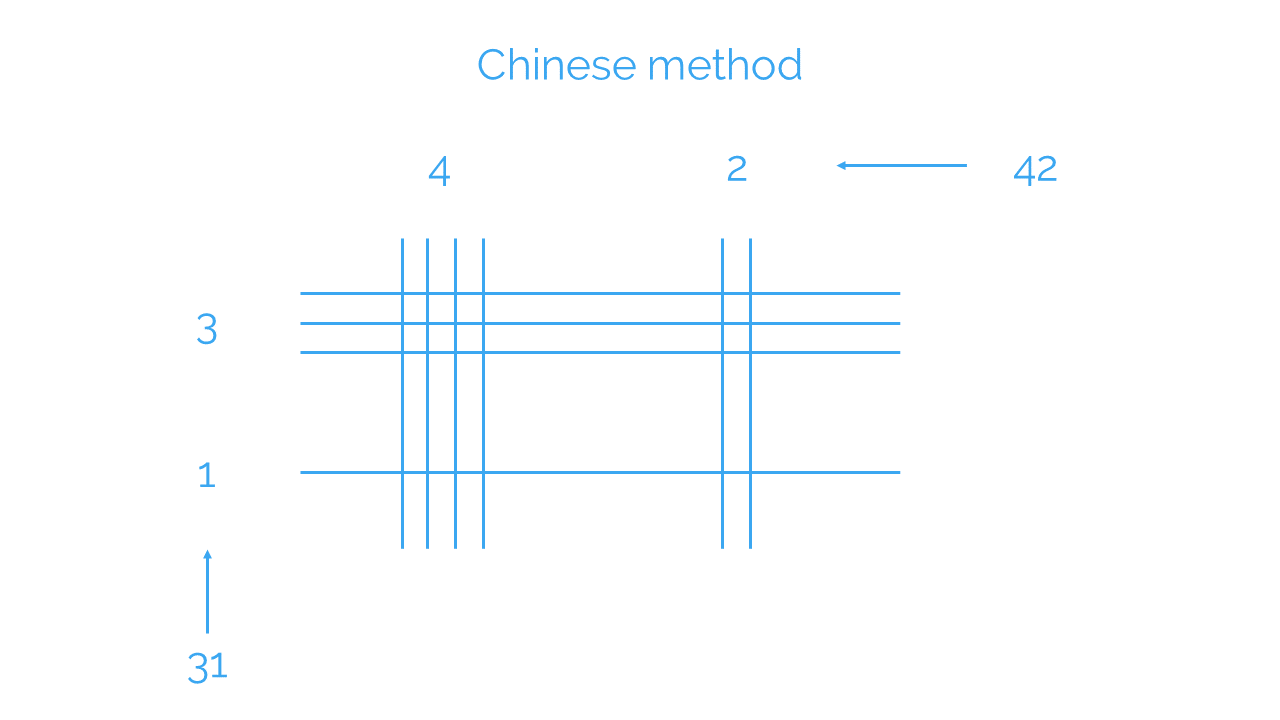 Next, count the number of times each pair of lines cross. Make sure you keep track of which ones correspond to the tens and which represent units:
Next, count the number of times each pair of lines cross. Make sure you keep track of which ones correspond to the tens and which represent units:
- Where the unit lines cross, we get the units of the result (since the product of units gives units).
- Where the unit lines and tens lines cross, we get the tens of the result (since the product of units and tens gives tens).
- Where the tens lines cross, we get the hundreds of the result (since the product of tens gives hundreds).
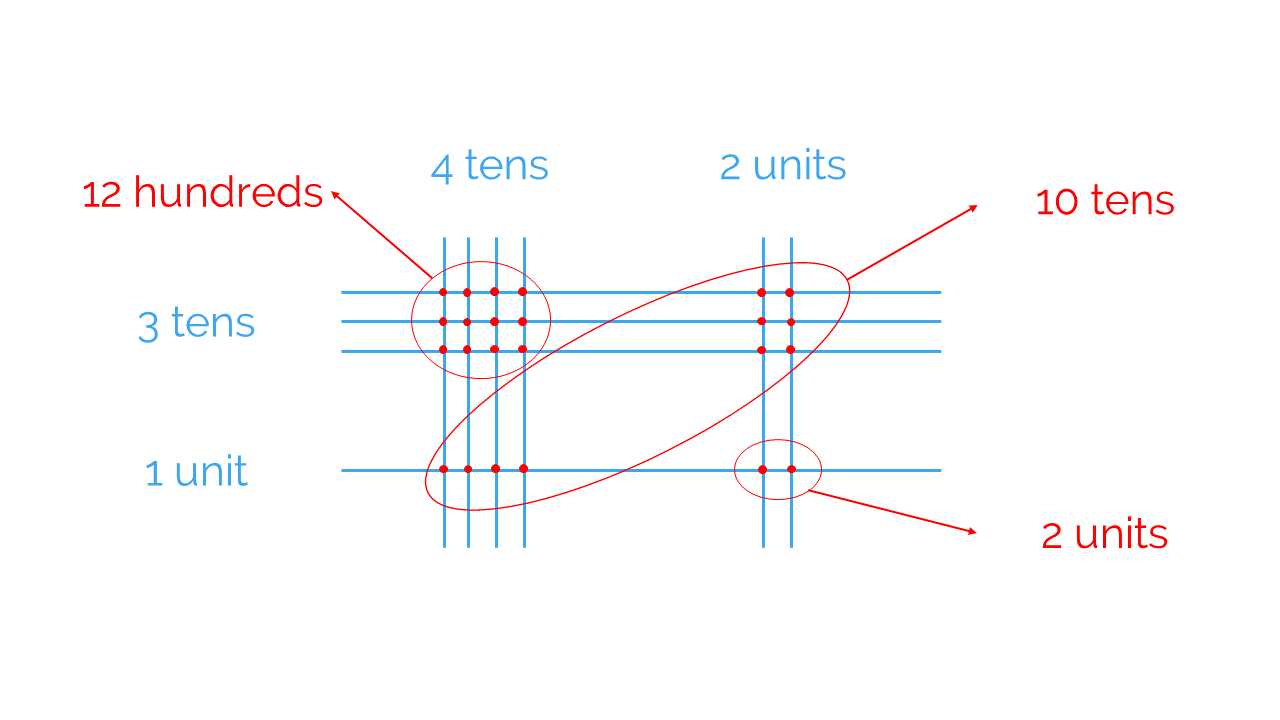 Now you can arrange all the information you’ve obtained into the result of 31 x 42:
Now you can arrange all the information you’ve obtained into the result of 31 x 42:
- 2 units.
- 10 tens, which is the same as 1 hundred.
- 12 hundreds, which when added to the hundred given by the 10 tens makes 13 hundred. These 13 hundreds can be written as 1 thousand and 3 hundreds.
So, we’ve got:
1 thousand, 3 hundreds, and 2 units: 1,302
Therefore we know that 31 x 42 = 1,302
Egyptian Method of Multiplication
The ancient Egyptians multiplied using a method that involved breaking down the multiplication into a series of additions, then doubling one of the factors (putting them into powers of 2).
Let’s look at how to multiply 31 x 42 using this method.
First of all, we need to place 1 and 31, and start doubling the two quantities. Like this:
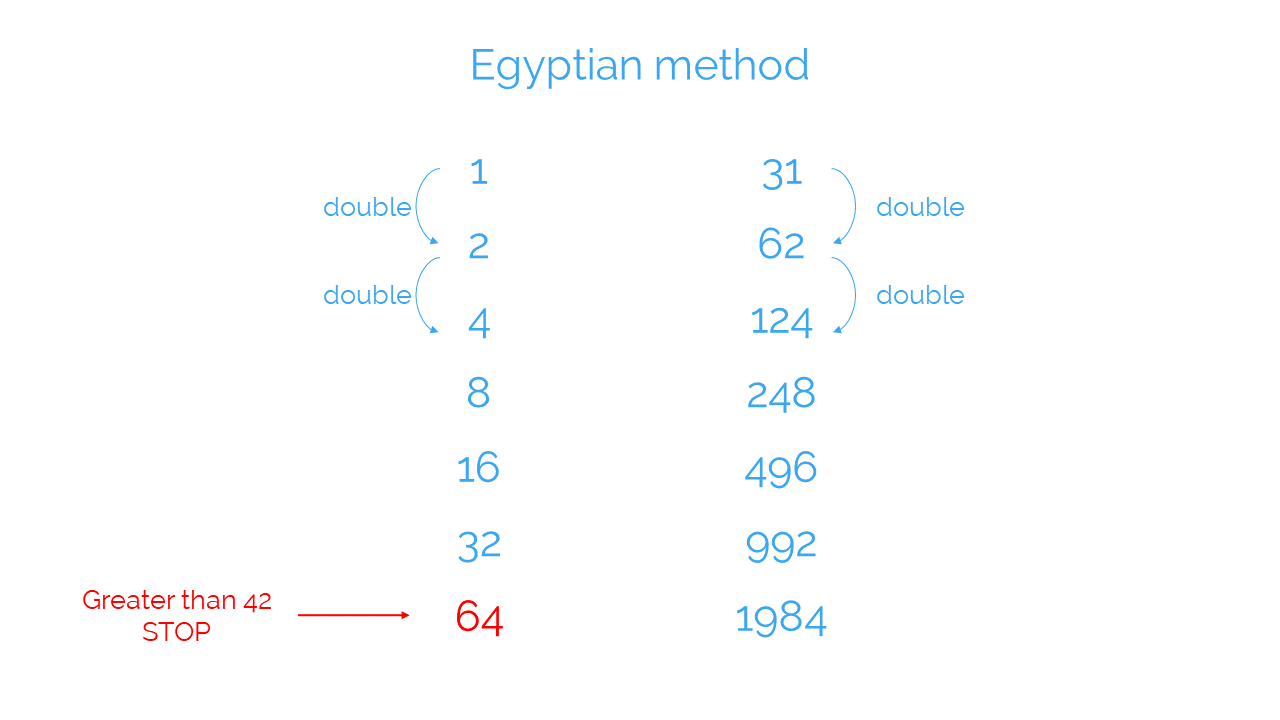
You’ll get different multiplications of 31 by powers of 2, like this:
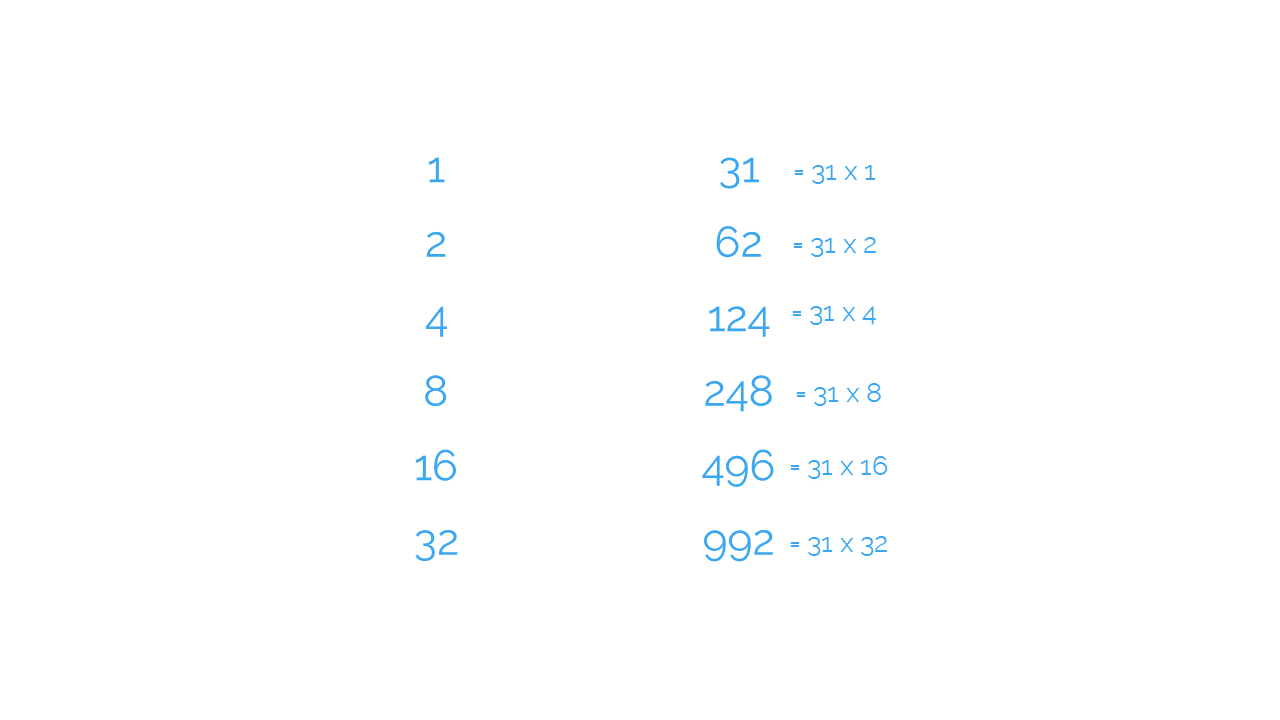
Now you need to look for the numbers that help you solve the multiplication 31 x 42. To do this, you just need to find the powers of 2 that add up to 42:
32 + 8 + 2 = 42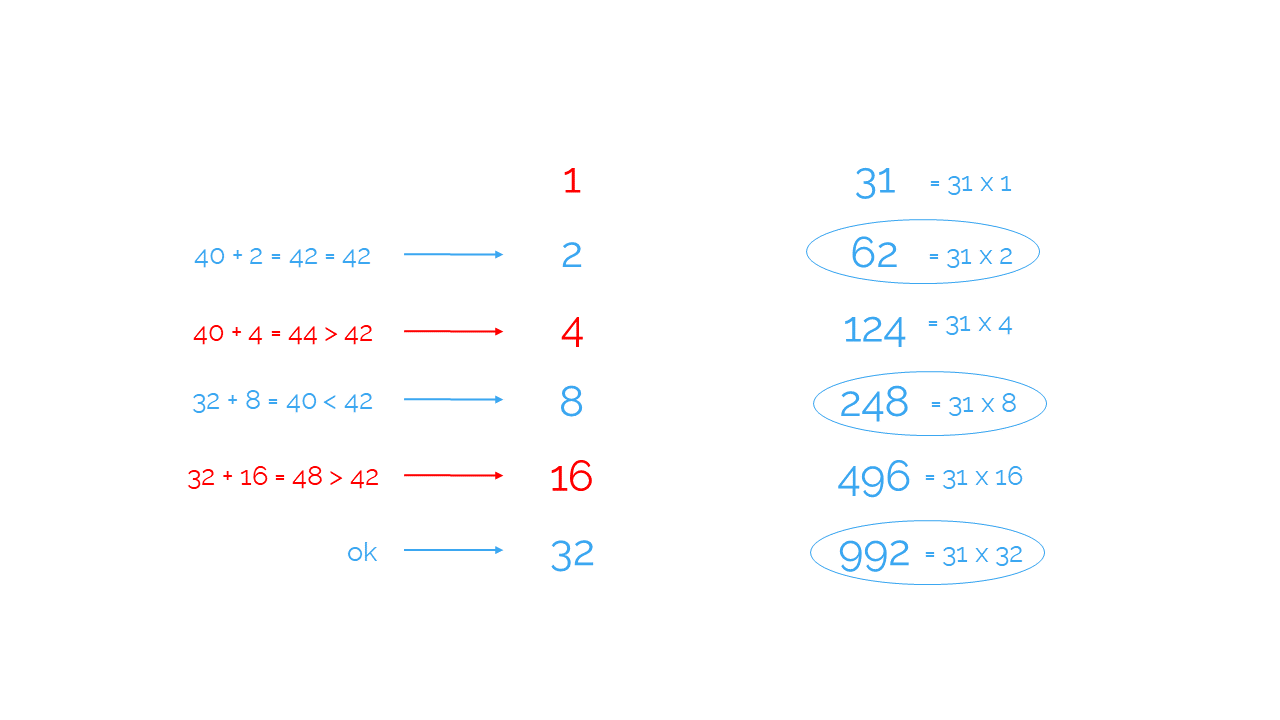 At this point, you will have managed to break down 31 x 42 into sums that you can calculate easily:
At this point, you will have managed to break down 31 x 42 into sums that you can calculate easily:
31 x 42 = 31 x (2 + 8 +32) = 31 x 2 + 31 x 8 + 31 x 32 = 62 + 248 + 992 = 310 + 992 = 1,302
And as you can see, the result we get once again is 31 x 42 = 1,302
I hope these multiplication methods have helped you to better understand how multiplication works. Share them with your friends, so they can become experts in multiplication too!
If you want to keep learning and practicing maths, register with Smartick and try it for free!
Learn More:
- Tens and the Decimal Number System
- Learn Multiplication Algorithm Using Blocks
- Alternative Methods for Multiplication: Russian and Hindu Methods
- What is Multiplication: Steps to Learn and Understand Multiplication
- Understanding Division with the Help of Geometric Visualization








I love Smartick
I want to learn more
Hi Moses,
Thank you very much for your comment.
If you want to learn more content like this and practice elementary school math, just sign up at Smartick. You have a free trial period with no strings attached.
If you have any additional questions or doubts you can write to my colleagues of the pedagogical team at [email protected].
Best regards!
Hi Karen,
Thank you very much for commenting. It makes us happy to hear that you enjoy Smartick.
If you have any questions or concerns, I want to remind you that we have an excellent support team that will assist you. Feel free to contact them at [email protected].
Cheers!
so good and superb
iTHIS IS SOO INTERESTING!!!!!!! I really love that we get to see how different places use multiplcation too.